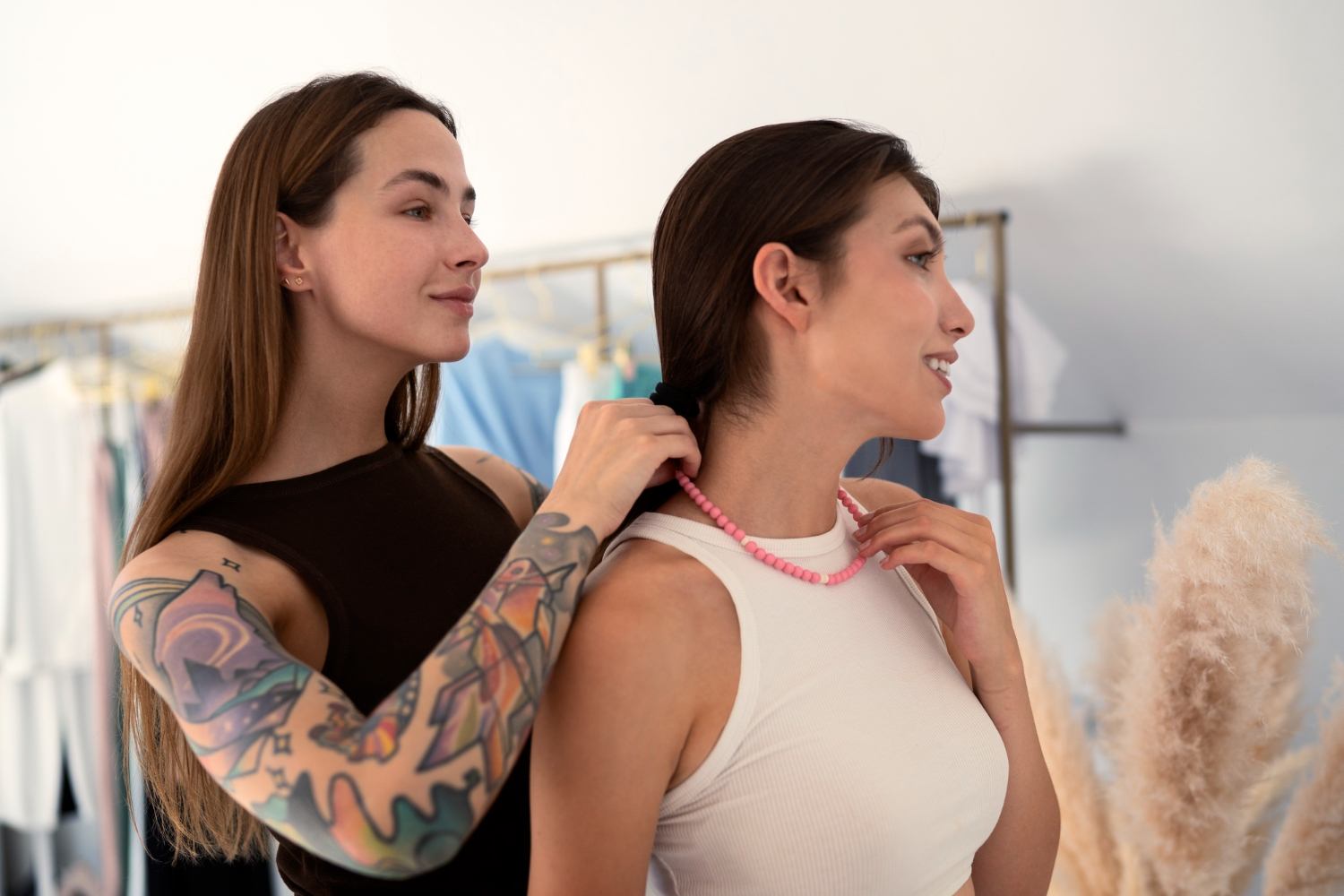Fashion
Neck Tattoo Considerations: What You Need to Know

In recent years, more and more people have been getting neck tattoos as a way to show their individuality and creativity. However, there are a few things to think about before getting a tattoo on your neck. To help you make a decision you won’t come to regret, we’ll explore some of the most important factors to think about before having a tattoo on your neck.
Understanding the Significance of a Neck Tattoo
A tattoo on the neck is one of the most noticeable parts of a person’s body and may have a major effect on their look. Tattoos on the neck, unlike those on other, less visible parts of the body, can elicit strong emotions from onlookers. Think about how you would feel if people constantly stared at your neck and judged you because of the tattoo.
Tattoo Design and Placement
Your neck tattoo is important, but its design and placement are more so. Because of the small size of the neck, detailed patterns may not work well there. The best designs are often straightforward and eye-catching. You should also give some thought to where on your neck you want the tattoo. The back of the neck is favored by some because of its inconspicuousness, while the sides are preferred by others because of the way they accentuate the curves of the neck.
Pain Tolerance and Healing Process
When it comes to tattoos, the neck is notoriously touchy. Tattoos around the neck can be particularly unpleasant since people tend to have a lower pain threshold there. Additionally, owing to continual movement and garment contact, the healing procedure for neck tattoos may be significantly more difficult. You may feel some pain during and after getting a tattoo.
Professional and Social Implications
Think about your career and social life before having a tattoo on your neck. In more conservative businesses, a tattoo on your neck may prevent you from being hired because of the company’s policy on visible tattoos. Consider how the tattoo will be received in various social contexts and if it fits with your overall image.
Tattoo Aftercare and Maintenance
Your neck tattoo will last longer and look better with the right upkeep. you avoid getting an infection or having your tattoo fade, make sure you follow your artist’s directions to a T. Use sunscreen on your neck tattoos because they spend more time in direct sunlight. A tattoo’s look may be preserved with regular moisturising.
Long-Term Commitment
Tattoos are irreversible, and while there are methods for having them removed, they may be pricey and may not be successful. Think about whether or not the neck tattoo you’re planning on getting will still signify anything to you in the future. Consider how your tattoo design might need to alter as your interests and priorities shift.
Researching Tattoo Artists
It is crucial that a competent and trustworthy tattoo artist be chosen. You can tell how experienced they are in creating neck tattoos by looking at their previous work. If you want the end outcome to look like you envisioned it, you must express your thoughts and expectations effectively.
Budgetary Factors
It costs money to have a good tattoo. Find out how much a neck tattoo and any future maintenance will set you back before having one. Getting a tattoo is a long-term commitment, therefore it’s important to get good work done even if it costs more.
Affection and Significance
There is usually some sort of meaning behind a tattoo. Think about the symbolism of your proposed neck tattoo and whether or not it accurately represents who you are and what you’ve been through. Don’t get a tattoo on a whim; instead, give careful consideration to the design and ask yourself why you want it.
Your Pain Threshold and Preparation
Tattoos on the neck might be unpleasant if you aren’t prepared for them. Before getting a tattoo, make sure you’ve had plenty of sleep, eaten, and drank. Your pain tolerance and general experience may both benefit from this.
Meeting with a Tattoo Artist for Advice
Schedule a meeting with the tattoo artist of your choice. Talk to them about your hopes, fears, and expectations. In order to guarantee that your neck tattoo turns out the way you want it, it is highly recommended that you see a professional artist.
Hypothesis of Allergy
Ask about the ink’s components before having a tattoo on your neck. Pigments can cause skin responses in certain people who are sensitive to them. To avoid problems, it’s important to be aware of the possibility of allergies.
Tattoo Regulations and Age Restrictions
Tattoo laws and minimum age requirements might vary widely from one location to the next. Before having a tattoo on your neck, find out what the law states. If you are under the legal age for a venue, you may need permission from a parent or guardian.
Finding Possible Resolutions
You should look at other possibilities if you’re on the fence about getting a neck tattoo. You may test out how a tattoo might appear on your neck with a temporary tattoo or henna design.
Conclusion
Getting a tattoo on your neck is a big commitment that should not be made lightly. There are many factors to consider, from the layout and location to the effect on your career. With careful consideration of these considerations and the advice of a qualified tattoo artist, you can make a decision that is in keeping with your unique personality and life goals.
FAQs
Is getting a neck tattoo more painful than tattoos on other body parts?
Tattoos on the neck tend to be more excruciating than those on less tender places because of the location. However, people have different pain thresholds.
Can I still get a neck tattoo if I have a corporate job?
It’s feasible to have a tattoo on your neck, but before you do, you should research your company’s policy on visible tattoos. Some workplace settings may impose limits.
How do I ensure the colors of my neck tattoo don’t fade quickly?
Sunscreen should be used everyday to protect your tattoo from the sun’s harmful UV rays and keep the ink from fading. Regular moisturising can also aid in keeping the tattoo looking fresh.
What if I change my mind about the neck tattoo in the future?
Tattoos are permanent, but there are ways to have them removed. Don’t forget that removing a tattoo may be costly, time-consuming, and inconclusive.
How do I choose the right tattoo artist for my neck tattoo?
Conduct in-depth research, review artists’ previous work, and confer with professionals. Find a tattooist whose work you like who specialises in tattooing necks in your preferred style.
